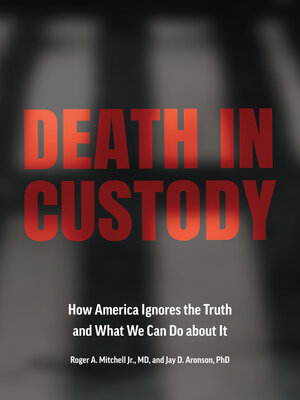Death in Custody
ebook ∣ How America Ignores the Truth and What We Can Do about It · Health Equity in America
By Roger A. Mitchell Jr.

Sign up to save your library
With an OverDrive account, you can save your favorite libraries for at-a-glance information about availability. Find out more about OverDrive accounts.
Find this title in Libby, the library reading app by OverDrive.



Search for a digital library with this title
Title found at these libraries:
| Library Name | Distance |
|---|---|
| Loading... |
The United States significantly undercounts the number of people who die in law enforcement custody each year. How can we fix this?
Deaths resulting from interactions with the US criminal legal system are a public health emergency, but the scope of this issue is intentionally ignored by the very systems that are supposed to be tracking these fatalities. We don't know how many people die in custody each year, whether in an encounter with police on the street, during transport, or while in jails, prisons, or detention centers. In order to make a real difference and address this human rights problem, researchers and policy makers need reliable data.
In Death in Custody, Roger A. Mitchell Jr., MD, and Jay D. Aronson, PhD, share the stories of individuals who died in custody and chronicle the efforts of activists and journalists to uncover the true scope of deaths in custody. From Ida B. Wells's enumeration of extrajudicial lynchings more than a century ago to the Washington Post's current effort to count police shootings, the work of journalists and independent groups has always been more reliable than the state's official reports. Through historical analysis, Mitchell and Aronson demonstrate how government at all levels has intentionally avoided reporting death in custody data.
Mitchell and Aronson outline a practical, achievable system for accurately recording and investigating these deaths. They argue for a straightforward public health solution: adding a simple checkbox to the US Standard Death Certificate that would create an objective way of recording whether a death occurred in custody. They also propose the development of national standards for investigating deaths in custody and the creation of independent regional and federal custodial death review panels. These tangible solutions would allow us to see the full scope of the problem and give us the chance to truly address it.







